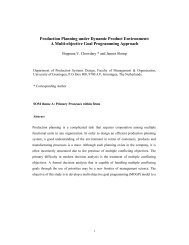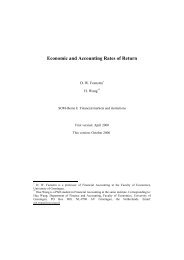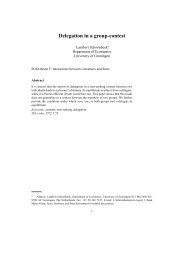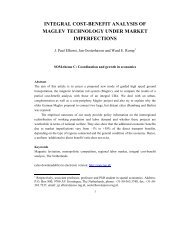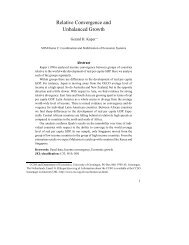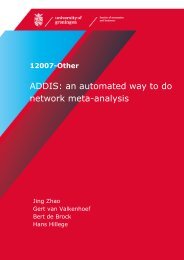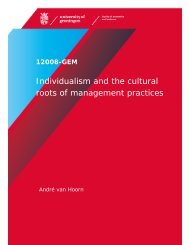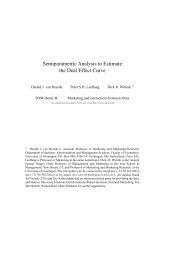Communication and Industrial Accidents - SOM Research Reports
Communication and Industrial Accidents - SOM Research Reports
Communication and Industrial Accidents - SOM Research Reports
Create successful ePaper yourself
Turn your PDF publications into a flip-book with our unique Google optimized e-Paper software.
conflict <strong>and</strong> accident-proneness. However, partly due to collinearity, no significant<br />
correlation could be found between role ambiguity <strong>and</strong> accident-proneness. Role<br />
ambiguity does not seem to contribute to the model.<br />
Especially informative/innovative communication is strongly correlated (resp. -<br />
.34 <strong>and</strong> -.65) with both role conflict <strong>and</strong> accident-proneness. However, regulative-<br />
/instructive <strong>and</strong> integrative communication are not correlated with role conflict <strong>and</strong><br />
only weakly (<strong>and</strong> in case of regulative/instructive communication even positively!)<br />
correlated with accident-proneness.<br />
I cannot explain why role conflict does not account for the influence of these<br />
kinds of communication; the positive correlation of regulative/instructive<br />
communication is contradictory to the hypothesis. On second view, the minor<br />
influence of regulative/instructive communication is not surprising, after the findings<br />
of the minor (<strong>and</strong> also positive) influence of the related concept of task specification<br />
(Van As 2001). The minor influence of regulative/instructive communication<br />
indicates that directives <strong>and</strong> reports on task related topics have only a limited value to<br />
avoid accidents.<br />
Because there are only eight organizations under study, a reliable statistical analysis is<br />
difficult at organizational level. If possible I will try to interpret the data at this level<br />
in a more qualitative way. To analyze the data at organizational level, I calculated the<br />
average score on accident-proneness, role conflict <strong>and</strong> ambiguity for each<br />
organization. At the organizational level the relationship between role conflict <strong>and</strong><br />
accident-proneness is less clear than at the individual level. As we can see in table 2,<br />
the differences at organizational level are not spectacular. The most surprising scores<br />
are role conflict of organizations A <strong>and</strong> D. The high score on role conflict of<br />
organization A could not be interpreted by the high score of the maintenance<br />
department. The score of this department was expected to be high because this<br />
department operates within three organizations. However, without maintenance the<br />
score would be even a little higher (9.4). This points at a surprising result: the<br />
relatively low score of maintenance workers on role conflict (only within organization<br />
20



